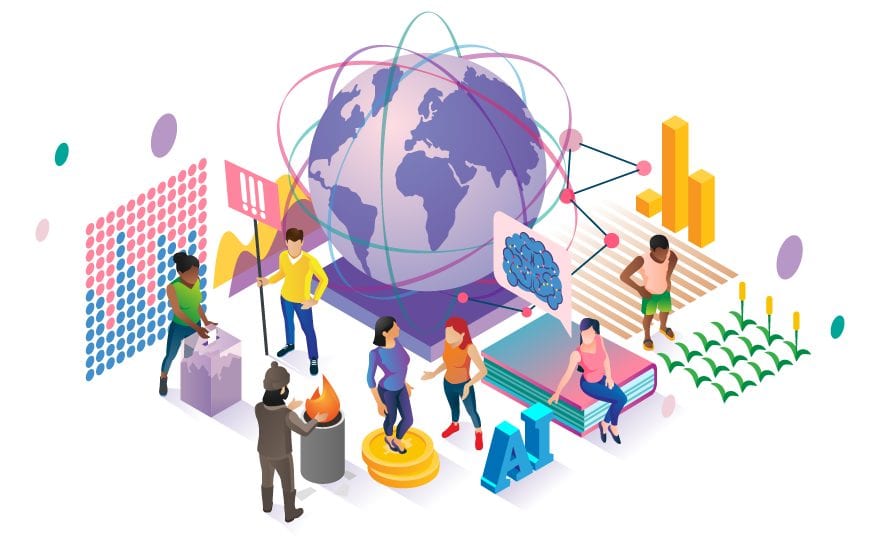By Shashikant Nishant Sharma
Within the intricate tapestry of human society lies the fundamental framework of family and social structures. These interconnected webs of relationships not only define our sense of belonging but also shape our identities, behaviors, and overall well-being. By exploring the nuances of family dynamics and broader social networks, we gain invaluable insights into the fabric of society and the mechanisms that underpin human interaction and development.
The Vital Role of Family: At the heart of society, families serve as the nucleus around which our lives revolve. Whether through the traditional nuclear family or the expansive networks of extended kin, familial bonds provide a sanctuary where values are instilled, traditions are passed down, and emotional support is freely given. Within this intimate sphere, individuals learn to navigate the complexities of human relationships, laying the groundwork for their journey through life.
Moreover, families serve as the primary agents of socialization, molding individuals into active participants within their respective communities. From the earliest stages of development, children absorb cultural norms, ethical principles, and behavioral patterns through interactions with their families. These formative experiences not only shape their worldview but also equip them with the skills and resilience needed to navigate the wider social landscape.
Yet, the concept of family is as diverse as the societies in which it exists. Cultural variations, economic realities, and shifting social norms all contribute to the kaleidoscope of family structures observed worldwide. From multigenerational households to single-parent families, each configuration reflects unique values and priorities, underscoring the adaptability of the familial unit in response to changing circumstances.
Navigating Change and Adversity: In the midst of societal transformations, families grapple with an array of challenges ranging from economic hardship to shifting gender roles. Urbanization, globalization, and technological advances have reshaped the fabric of family life, ushering in an era of unprecedented complexity and diversity. While these changes may strain traditional notions of family, they also present opportunities for growth, adaptation, and redefinition.
For instance, the rise of blended families and co-parenting arrangements underscores the resilience of familial bonds in the face of divorce and remarriage. Similarly, same-sex partnerships challenge conventional definitions of family, highlighting the fluidity and inclusivity inherent in modern family structures. By embracing diversity and fostering open dialogue, families can harness the strength of their collective experiences to navigate change and adversity.
Beyond the Family Unit: Exploring Social Networks However, the influence of social structures extends far beyond the confines of the family unit. Communities, comprising diverse networks of relationships and affiliations, serve as vital extensions of familial support. Within these communal spaces, individuals forge connections, share resources, and collaborate on shared goals, fostering a sense of belonging and solidarity.
From neighborhood associations to religious congregations, social structures provide avenues for social interaction, mutual support, and collective action. By participating in community life, individuals not only strengthen their social ties but also contribute to the broader fabric of society. Moreover, communities play a crucial role in addressing systemic challenges such as poverty, inequality, and social injustice, amplifying the voices of marginalized groups and fostering social change.
Conclusion: In essence, family and social structures form the cornerstone of human society, weaving a tapestry of interconnected relationships and shared experiences. From the intimate bonds of the family unit to the expansive networks of community and society, these structures provide the foundation for individual growth, collective well-being, and societal resilience. As we navigate the complexities of the modern world, understanding and nurturing these bonds are essential for building inclusive, thriving communities where all individuals can flourish.
References
Alesina, A., & Giuliano, P. (2010). The power of the family. Journal of Economic growth, 15, 93-125.
Becker, G. S., & Murphy, K. M. (1988). The family and the state. The Journal of Law and Economics, 31(1), 1-18.
Bernardes, J. (1997). Family studies: An introduction. Psychology Press.
Hardwig, J. (1990). What about the family?. Hastings Center Report, 20(2), 5-10.









/top-jobs-for-sociology-majors-2059633_FINAL-5c536b5446e0fb00013a1ba3.png)












You must be logged in to post a comment.